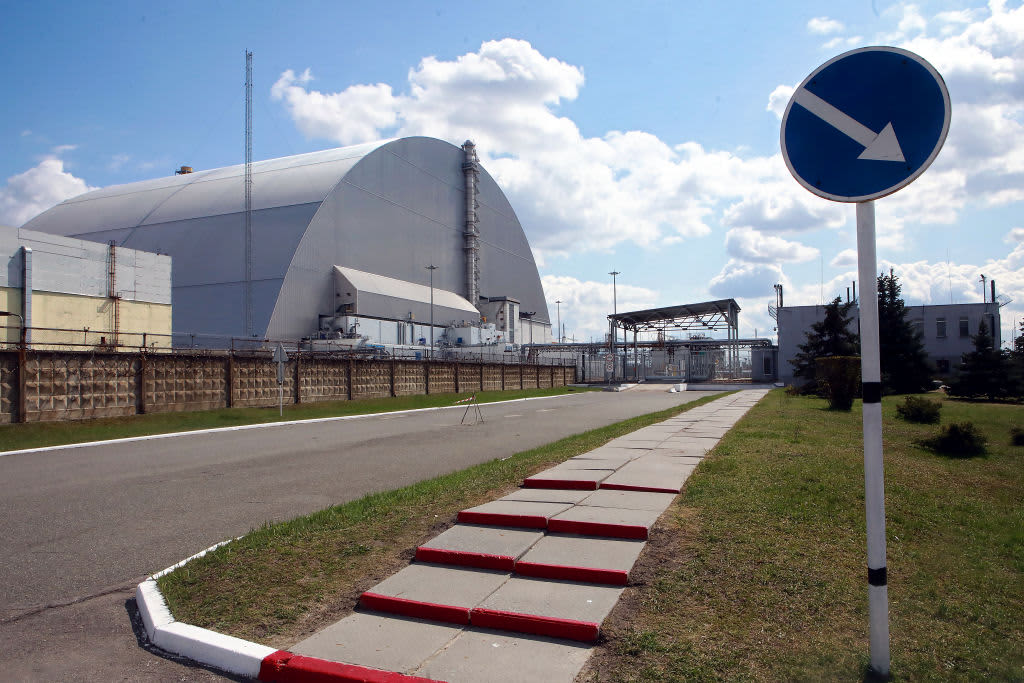
The New Safe Confinement seals off the Object Shelter, also known as the Sarcophagus, a temporary structure built in 1986 over the debris of the 4th reactor of the Chornobyl Nuclear Power Plant, Kyiv Region, northern Ukraine.
Future Publishing | Getty Images
Ukraine’s nuclear agency on Friday warned radiation at the defunct Chornobyl nuclear power plant had exceeded control levels after Russian troops seized control of the area.
Experts at the state nuclear agency said in a statement that the change was due to the movement of a large number of heavy military machinery lifting the top layer of soil into the air.
The condition of the Chornobyl nuclear facilities and other facilities remains unchanged, according to the State Nuclear Regulatory Inspectorate of Ukraine.
An explosion and fire at the Chornobyl power plant on April 26, 1986, led to the world’s worst nuclear disaster.
Russia launched an unprecedented invasion of Ukraine on Thursday, with officials warning on Friday that Russian troops were closing in on the capital city of Kyiv.
The assault has ratcheted up fears of a devastating humanitarian crisis and represents one of the worst security crises in Europe for decades.
Russian forces captured control of the Chornobyl nuclear power plant on Thursday, prompting an advisor to the presidential office to warn it was now “impossible” to consider the shuttered reactor safe.
Mykhailo Podolyak, an aide of Ukraine President Volodymyr Zelenskyy, described the attack by Russian troops as “pointless,” Reuters reported, and said it represented “one of the most serious threats in Europe today.”
Ukraine’s Interior Ministry said Friday that it was monitoring an increase in radiation levels, but the situation was not critical for the time being.
Russia’s defense ministry said on Friday that Russian paratroopers had agreed with the Ukrainian military to jointly ensure the facility’s safety.
“Joint activities involving Russian paratroopers and Ukrainian service members … guarantee that nationalist units and other terrorist organizations won’t be able to take advantage of the current developments in the country in order to stage a nuclear provocation,” said Russian Defense Ministry spokesman Igor Konashenkov, according to Russian state news agency Tass.
‘Maximum restraint’
Estimates of the numbers of direct and indirect casualties from the Chornobyl disaster vary, although environmental group Greenpeace puts the eventual death toll of cancers caused by Chornobyl at close to 100,000.
The Chornobyl Exclusion Zone, a vast and empty land of roughly 1,000 square miles around the shuttered reactor disaster, lies between the capital city of Kyiv and the Belarus-Ukraine border.
Speaking shortly after Russian troops took control of the nuclear power plant on Thursday, Ukraine’s Zelenskyy said via Twitter: “Our defenders are giving their lives so that the tragedy of 1986 will not be repeated.”
“This is a declaration of war against the whole of Europe,” he added.
The United Nations nuclear watchdog has said it is following the conflict in Ukraine with “grave concern” and called for “maximum restraint to avoid any action that may put the country’s nuclear facilities at risk.”
International Atomic Energy Agency Director General Rafael Mariano Grossi said Thursday it was of “vital importance that the safe and secure operations of the nuclear facilities in that zone should not be affected or disrupted in any way.”
Grossi said the IAEA remains in permanent contact with its Ukrainian counterpart.
A spokesperson for the IAEA was not immediately available to comment when contacted by CNBC.




